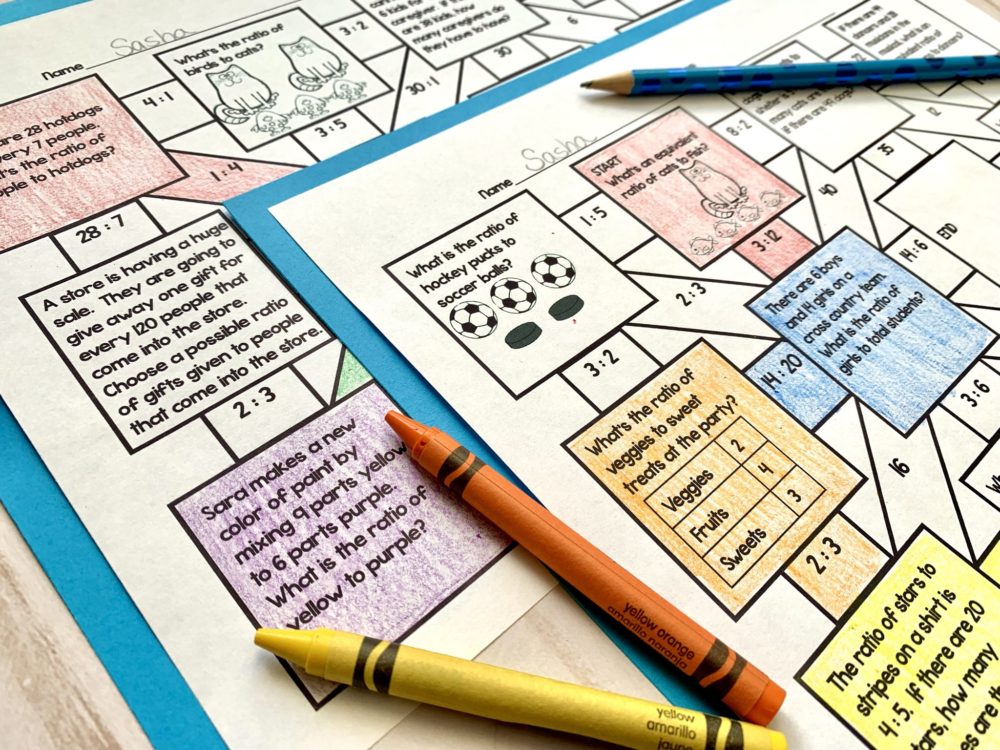It’s Saturday night. I hear the giggles of the kids and the faint voices of my husband and our neighbor out at the bonfire. I’d love to be part of the fun, but I’m slumped on the couch, with piles and piles of ungraded papers scattered everywhere, again. My kids are busy making memories without me, again.
But the students completed the work, so I must check it, right? WRONG! Destroy that belief.
Determine Your Purpose of the Assignment to Determine How to Grade
Math homework is meant for practice. Mistakes show up in practice. Don’t punish the kids for muddling through a new concept. Show them their persistence and learning is the goal. Give credit for completion.

If you must grade the homework, choose 3-5 problems, correct those, but skip the grade so you provide feedback, but students aren’t punished with a poor grade for making mistakes when they’re learning something new.
If the purpose of reading group work is for students to think about the chapters they read and be ready for discussion during reading groups, grade it for completion, but not content.
Here’s a quick tip when grading for completion…don’t get those papers into your hands. Don’t even touch them. You do NOT need another stack of 35 papers paperclipped and taking up prime real estate on top of your desk.
If you’re grading for completion, walk around and glance to see if the homework is complete. I walk around with a checklist. I mark the absent students for the day on the checklist and then ONLY mark the students that DIDN’T complete the work to save on time. During bell work or when students are working on something else is the best time to do this.
Bonus! By not collecting papers, I don’t waste time passing back the papers, either!
Do you need to see if your students understood a concept and are ready to move on? How about a quick formative assessment that can be graded in a few minutes? And by graded, I mean separated in a “they get it” pile or a “they don’t get it” pile.
Assign Work that Doesn’t Require A Lot of Checking Time

A form that checks itself, yes please! Remember the old scantrons that teachers used to correct tests in seconds? If you don’t, then you’re way younger than I am! Google™ Forms are the scantrons of today. With so many schools providing a device for each student, jump into assigning Google™ forms to save time from checking homework.
There’s also assignments that are self-grading. With my math mazes, students can usually determine they’ve made a mistake while working because they need a correct answer to move to the next problem.  There’s nothing better than immediate feedback! If you collect and grade them, just glance at the squares students have colored in. Check out my mazes for math concepts in 3rd, 4th, 5th and 6th grade here.
There’s nothing better than immediate feedback! If you collect and grade them, just glance at the squares students have colored in. Check out my mazes for math concepts in 3rd, 4th, 5th and 6th grade here.
Another option is self-checking math task cards created by my friend Mary Jenkins. These also give immediate feedback! Check them out here.
Check Work While Students are Working
Spot check as students work. Move around the room and circle the number of the question if it’s incorrect. Students go back and rework it or ask a question if they don’t understand.
Find an open desk when students are working quietly. Sit there and correct papers. I liked to be in close proximity to my students as they were working. Just don’t get mistaken as a student as I often did!
Let Students Take on the Task of Checking Papers
Grade as a class. Students correct their own work to take responsibility for their learning. I did this on a regular basis. Students had the feedback they needed on how they were doing, and I the work didn’t pass through my hands.
Side note for this…I know many teachers that complain that some students change their answers when the answer was wrong. Don’t take this the wrong way, but so what? I’m not giving the assignment a grade. I want them to know if they’re consistently getting the answers wrong, meaning they need more work on that concept, or if they’re consistently getting them right, meaning they know they’re close to mastery. If they change their answer, they know they got it wrong, don’t they?

Do you have stations or centers? Make a work checking station. Students correct their work with the answer key. If it’s something that you want to see how they did, have them turn it in after they check it. If not, students can put it in their take-home folders right away.
Vary work-checking practices. This ensures your students don’t just write random answers to show work is “complete”. If your students are unsure when you’ll check for correctness, they are more likely to put effort in on all assignments.
As for me, scaling back on checking papers led to time out at the bonfire with my kids and husband. There’s nothing better than a fire so hot you have to move back in your chair, and ooey-gooey marshmallows in S’mores. So what are you going to do with your extra time on the weekend?
Looking for More?
Are you wondering how to grade Interactive Notebooks? Check out my friend, Lynda’s blog post on that here. Here’s a hint…she suggests you do not grade every page!
Here’s my friend Ginny’s blog post on grading notebooks, including a free rubric!

